Certified Rare Channel Islands California Chumash Ceremonial Pendant Bennett COA

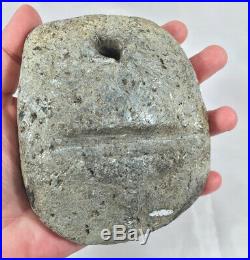
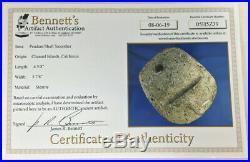
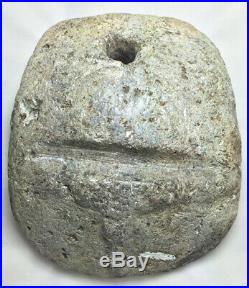
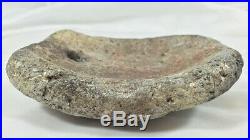
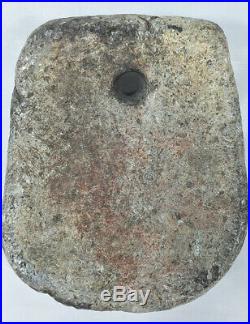
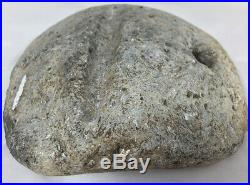
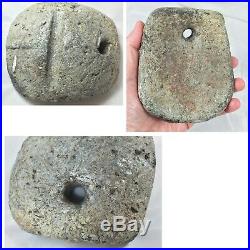
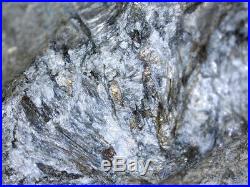
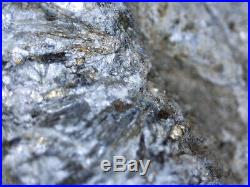
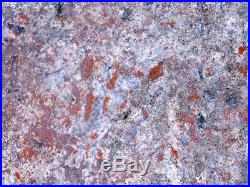
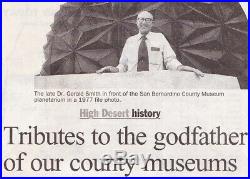
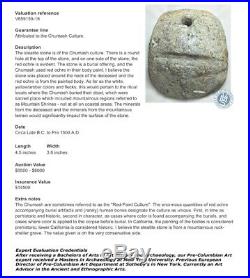

Certified Rare Channel Islands California Chumash Ceremonial Pendant. Statute covering cultural patrimony Code 2600, Chapter 14. A large, over-sized crystallized steatite artifact attributed to the Chumash culture discovered in the Channel Islands, California. There are a few interpretations that it may be for ornamental, ceremonial or utilitarian purposes. Nterpretations that this may have been repurposed from an ancient steatite bowl. It portrays a depiction of combined pendant plus shaft smoother, the groove does not extend the width of the stone. It is large and weighs 1Lb (452grams). Archaeological documentation show these types of artifacts utilized in ceremonial traditions in Southern California. Smith helped launch the San Bernardino County Museum in 1952 and was the Director of the museum. He is credited for an abundance of documentation of California artifacts since the 1930’s. Smith passed away on February 27, 2001. One side is convex, and one side is concave. There is a drilled suspension hole. There is a hole/gauge on the top near the left side which could be intentional or natural but it’s encrusted with mineral deposits. The thin crystallized surface of the entire artifact gives it a light green color appearance. The surface is coated with a thin layer of white crystals, with specs of yellow/amber minerals (most likely mica, etc) which under 200x magnification looks like a sheet of ice (view 200x magnification photos). This thin layer of crystallization gives the artifact an overall beautiful appearance, making it shine and sparkle when the light hits it or if it is rotated around in the light. The exaggerated size and trace elements of red ochre attributes an interpretation of this artifact being utilized for ceremonial purposes (view 200x magnification photos). Chumash culture used mineral/earth pigments to paint their bodies and for rock art. Fully in-tact, no repairs, no restoration. Location: Southern California, attributing to the Channel Islands and an early 1900’s discovery. Most of the Channel Islands are now restricted to public access and preserved as a National Park, making this an extremely rare artifact. Size: 4-5/8 inches x 3-7/8 inches x 1 inch. Date estimate Late BC-1500AD. Archaeological excerpt about Chumash sacred ritual locations: Chumash Ritual and Sacred Geography, J. Mountain shrines were used for various purposes; they were places where public and private rituals were conducted, and both community and individual needs were addressed at different times (Applegate 1975; Hudson and Blackburn 1986; Hudson and Underhay 1978). Shrines were locations where offerings were given for different reasons. They would come together there in their necessities and pilgrimages. Shrines were also used to commemorate the dead. Shrines are also known to have been used for winter solstice ceremonies, which were vital to the Chumash in perpetuating their relationship with the universe and especially the Sun, Kakunupmawa Hudson et al. 1977; Hudson and Blackburn 1986. Rituals revolved around the Sun, a powerful supernatural being capable of giving life, warmth, and light, or bringing death (Hudson and Underhay 1978:61). Please view all large high definition pictures which show every detail of the artifact. The item “Certified Rare Channel Islands California Chumash Ceremonial Pendant Bennett COA” is in sale since Friday, August 9, 2019. This item is in the category “Collectibles\Cultures & Ethnicities\Native American\ US\Pre-1600\Artifacts”. The seller is “marieleff” and is located in Georgetown, Texas. This item can be shipped to United States.
- Tribal Affiliation: Chumash
